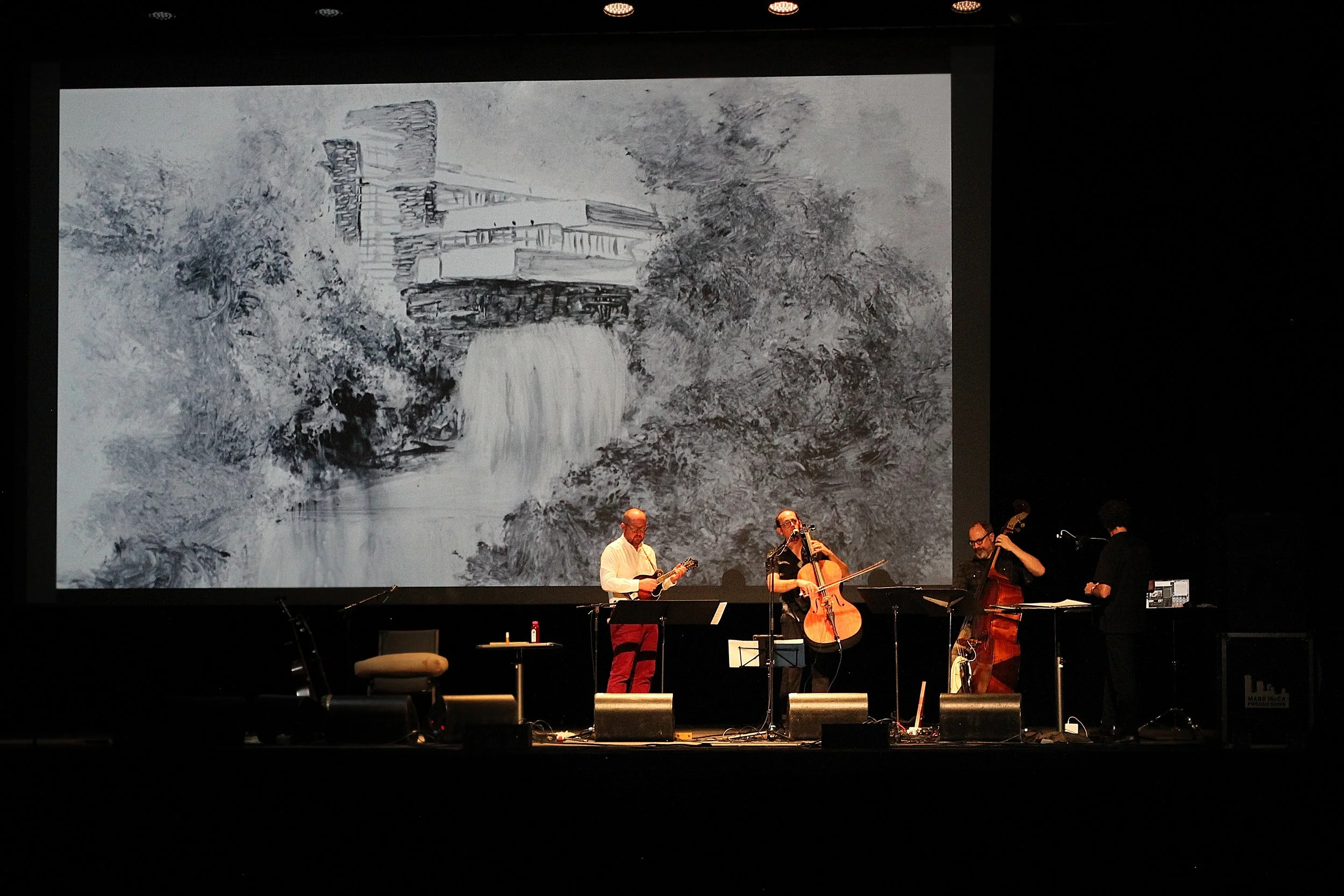Hope on the Hill
a suite of music inspired by Frank Lloyd Wright’s life
Performed at FreshGrass 2025.
“Hope on the Hill” Program Info
Original Instrumentation: Cello, mandolin, bass, vocals (featuring the Mike Block Trio)
Other settings:
Cello Concerto Orchestral Instrumentation: 2222 - 2210 - 2pc - str
Soloist with Strings: violin(s), viola(s), cello(s), bass(es)
The Story: This suite of original music tells the story of Frank Lloyd Wright’s dramatic personal life, while drawing on the principles of his artistic philosophy. In addition to Wright’s inspiring creations as an architect, he showed remarkable resilience through multiple personal tragedies. In 1914, while away from his home, Taliesin, the house was burned to the ground by an employee, who also murdered seven of the inhabitants with an axe — including Wright’s second wife, Mamah, and her two children. Wright rebuilt Taliesin, only for it to burn down again in 1925 after sparks from faulty electric wiring in a telephone caught fire by his bed. Wright and others spent several hours fighting the fire themselves, and Wright was so desperate to save the building that, along with burning the soles of his feet, he burned his eyebrows off. After this, Wright rebuilt Taliesin for a third time, which is the building that stands today.
After the Great Depression (1929), Wright lost all of his work, as high-end clients could no longer afford custom-designed homes. Having been active since 1893, Wright was also considered “washed up” and “out of date” by the architectural community. It was at this time that he started teaching through his Taliesin Fellowship (founded in 1932), through which one of his students convinced his family to hire Wright to design a summer home in Pennsylvania. This became what we now know as Fallingwater (1935), which landed Wright on the cover of TIME magazine (1938) and triggered a massive renewal of his career. In fact, the vast majority of Wright’s output happened in the two decades after Fallingwater, when he was in his 70s and 80s, culminating in the Guggenheim Museum in NYC (1959), created in the year Wright died at the age of 91.
In Mike Block’s composition “Hope on the Hill,” the opening short movements (The Hillside / Construction) meditate on the natural Wisconsin environment on which Wright was inspired to design Taliesin, as well as the construction of the home itself. The first song, Finally Home, explores the forward-looking optimism of building something new, ending with the completion of this utopian site. The second song, Life in the Blue Room, is a celebration of the life that happened inside Taliesin, after which the Fire upon Fire movement laments the recurring destruction of all that had been built. Waterfall is the next movement, representing the resurgence of life after death. This movement is the emotional heart of the suite, and represents both the literal rebuilding of Taliesin, as well as the metaphorical rebuilding of Wright’s life and career after tragedy. The suite ends with the eponymous song Hope on the Hill, meditating on Wright’s incredible resilience and inspiring audiences to find a similar force of will.
Soundcheck performance of “Hope on the Hill” at Freshgrass 2025
Structure/Timing of Movements:
1a: THE HILLSIDE 1.5’
1b: CONSTRUCTION 1.5’
2: FINALLY HOME (SONG) 4’
3: LIFE IN THE BLUE ROOM (SONG) 5.5’
4: FIRE UPON FIRE 3’
5: WATERFALL 7.5’
6: HOPE ON THE HILL (SONG) 4.5’
27.5 minutes total
Visual Element: LIVE original illustration was created and performed by Kevork Mourad for the premiere of Hope on the Hill to accompany the entire suite, adding evocative visuals of the story, providing a multi-sensory experience for the audience.
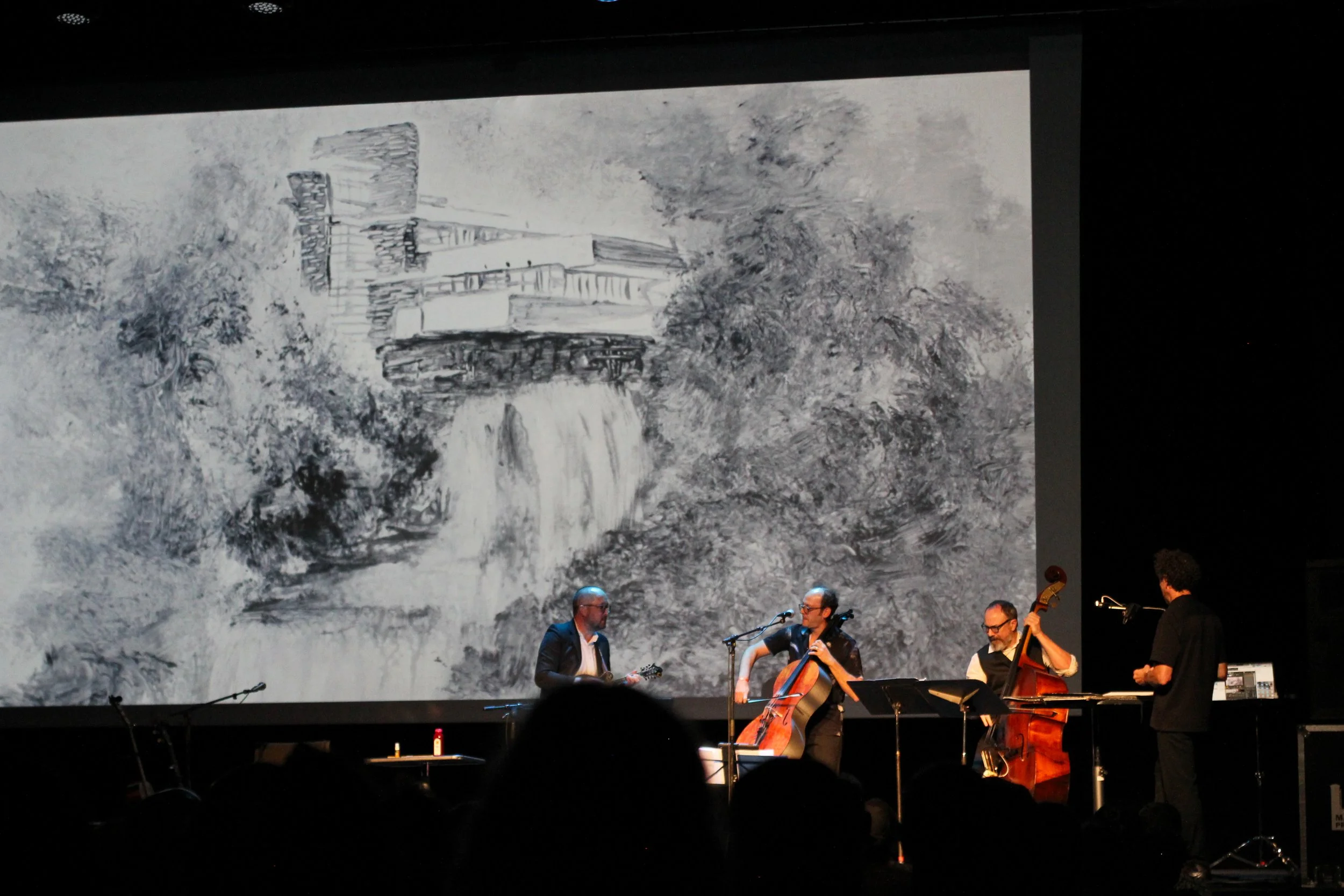

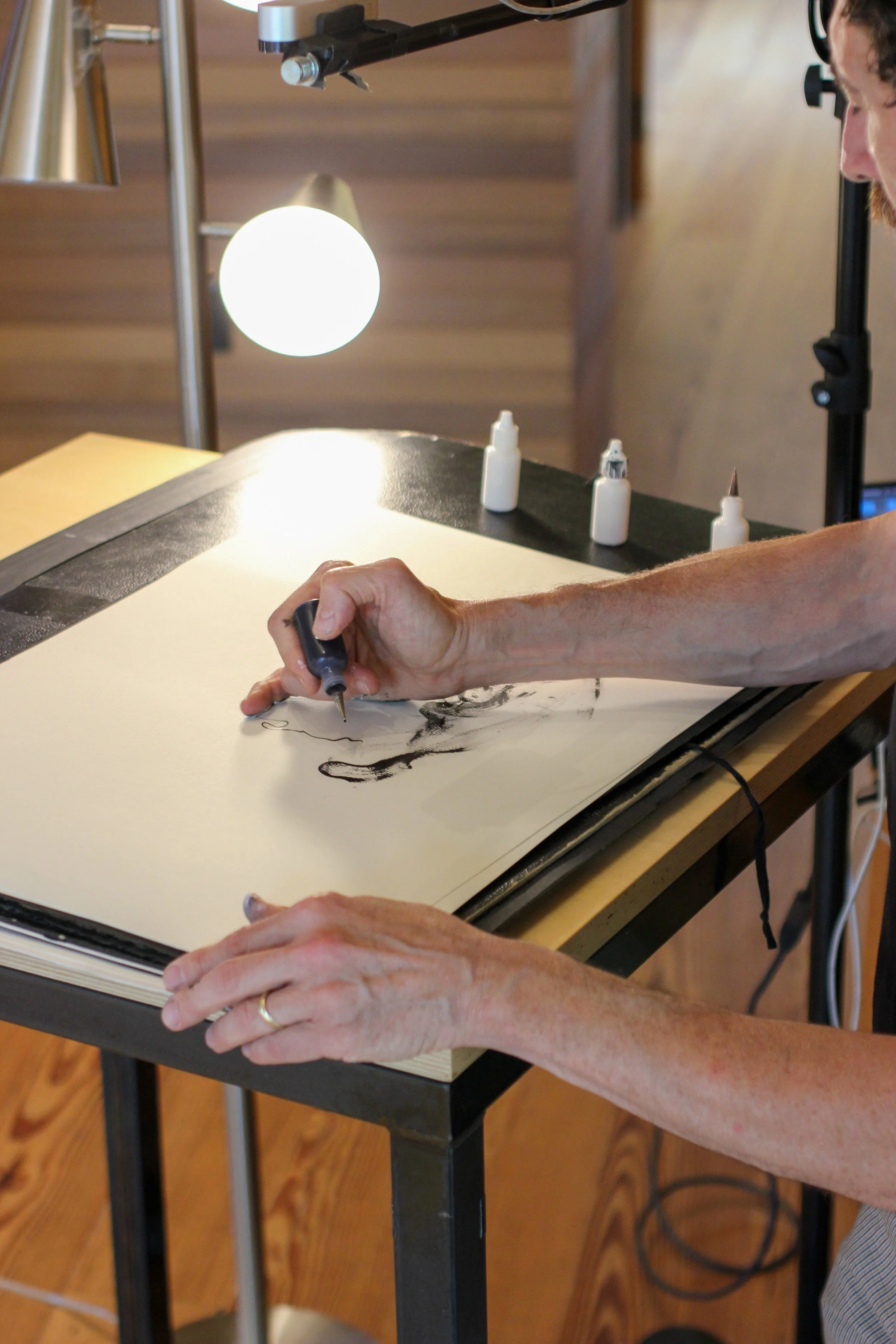
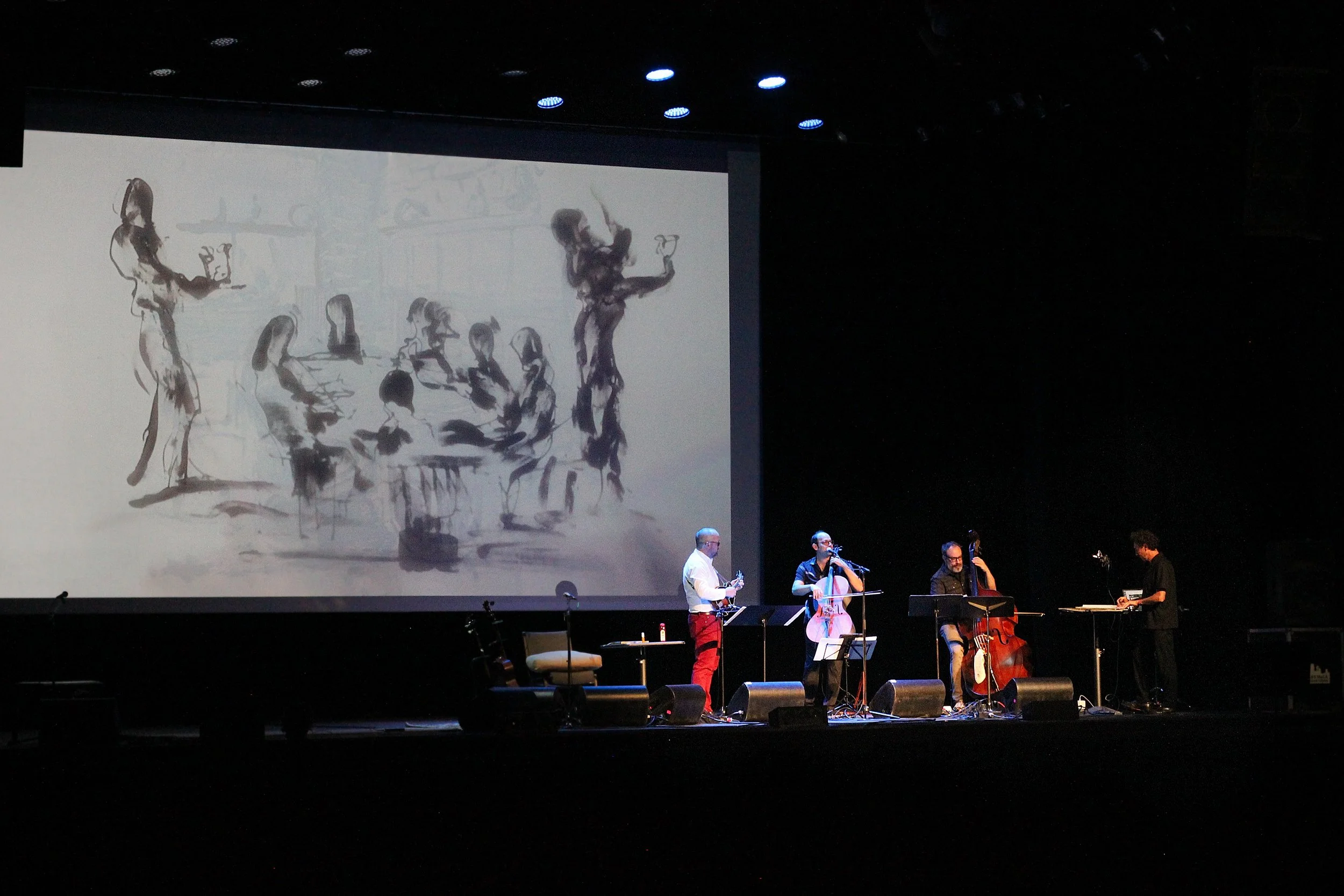


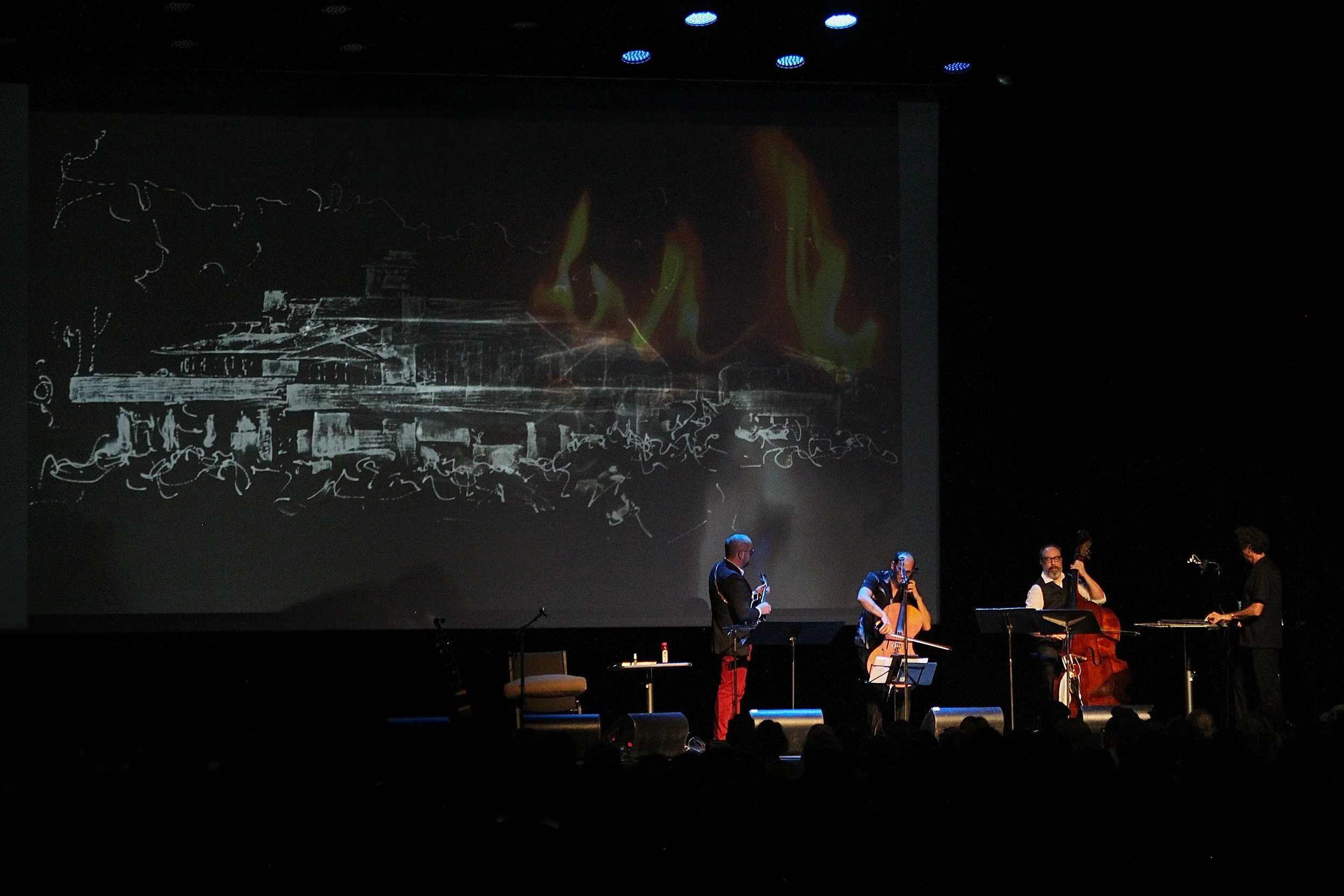

About Mike Block’s connection to Frank Lloyd Wright
Composer/Cellist/Vocalist Mike Block has been inspired by the work of Frank Lloyd Wright since childhood, often dreaming of being an architect when he was young. In 2019, Mike began connecting his early love of architecture with his musical passions by embarking on solo house concert tours exclusively at properties designed by Frank Lloyd Wright. In 2023, Mike was Artist-in-Residence at Taliesin in Wisconsin, and for a whole week had full access to the buildings and land at Taliesin to inspire his creative work. Mike began composing lots of musical material while inside Taliesin’s various rooms, as well as inside Fallingwater later that summer. Mike also leads an annual Creative Music Retreat at Fallingwater each June. It is this seed material, created within the spaces Wright himself designed and spent time in, that is the source material for this composition.


